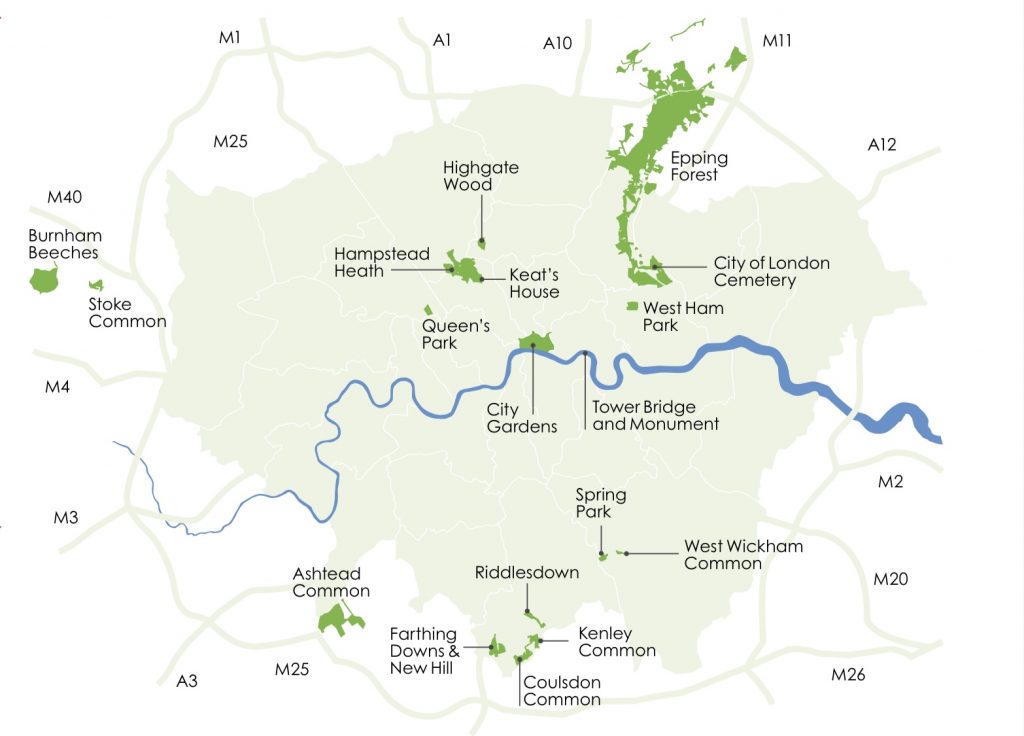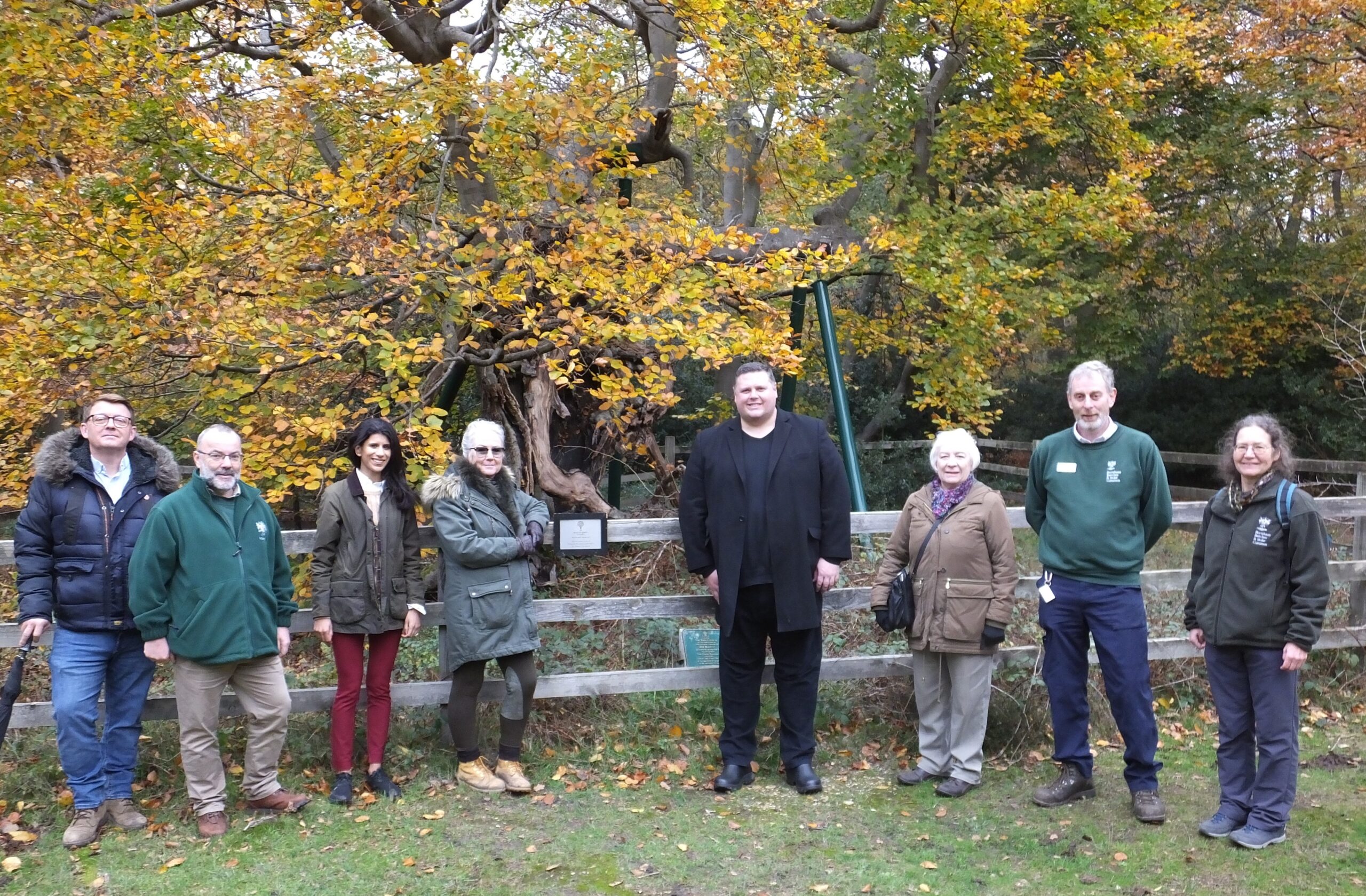New report: Network of Commons worth millions to society (cityoflondon.gov.uk)
A new report has revealed that the network of “Commons” – managed and conserved by the City of London Corporation across Buckinghamshire, Surrey, and parts of South London – are worth over £12 million a year in benefits to society, with a present value of £364 million over 50 years.
The Commons, which comprises West Wickham Common and Spring Park (The West Wickham Commons); Farthing Downs, Coulsdon, Kenley, and Riddlesdown Commons (The Coulsdon Commons); Burnham Beeches and Stoke Common; and Ashtead Common, are a valued collective of open spaces which include Sites of Special Scientific Interest, historic landscapes, Scheduled Monuments, and other nationally important features.
Together they cover an area of around 2,000 acres, which is roughly the size of 1,500 football pitches and makes up over 18% of the 11,000 acres protected by the City Corporation across London and southeast England.
Many of these spaces were purchased by the organisation to protect them from being lost to the urban development of the capital during the mid-nineteenth century, with the more recent acquisition at Ashtead Common, Stoke Common, and Coulsdon Commons in the last 30 years.
They attract around 1.6 million visitors per year – equivalent to more than 17 times the capacity of Wembley Stadium.
The report, produced by Natural Capital Solutions, calculated the value of a number of benefits the City Corporation’s open spaces deliver to the public, including through recreation, health and wellbeing, air and water quality, and by removing carbon from the atmosphere.
It found that the health and recreation benefits of The Commons alone are worth more than £8.4 million every year to society and that these sites deliver a benefit-to-cost ratio of 6.6, which means that every £1 spent on maintenance delivers £6.60 in public benefits.
The report found that the wider network of open spaces managed by the City Corporation – including Epping Forest, Hampstead Heath, and 180 smaller sites in the City of London – are worth £282.6 million each year in benefits to society overall, and £8.1 billion over 50 years.
Chairman of the City Corporation’s Epping Forest and Commons Committee, Ben Murphy, said:
“The City of London Corporation’s green spaces help provide an important environmental halo around the capital and are a priceless sanctuary for many.
“The Commons play a critical role, as both a home to many rare species of flora and fauna and as a space for local communities to relax, enjoy and explore nature. These sites are of national and international importance, as Sites of Special Scientific Interest and National Nature Reserves.
“This report demonstrates, in both scientific and economic terms, the value that these spaces bring for millions of people living in and around London.
“This data will also enable us to ensure we work strategically at landscape scale with other landowners across Buckinghamshire, Surrey and London to continue to improve the value to society these green spaces offer and to ensure our resources are aligned and prioritised appropriately.”
The City Corporation spends £38 million a year on maintaining its open spaces. Many of these sites operate as charitable trusts and are run at little or no cost to the communities they serve.
They include a wide variety of critically important wildlife habitats, Sites of Special Scientific Interest, Special Areas of Conservation, and National Nature Reserves, and are protected under legislation.
In total, these sites are home to 58,000 ancient trees, capture over 16,000 tonnes of carbon every year and attract over 47 million visitors annually – over three times the number who go to Premier League football matches every season, and almost eight times the number of annual visitors to the Grand Canyon.
These open spaces won five honours in 2023’s London in Bloom competition, with a further 15 taking Green Flag awards, recognising them as some of the best managed green spaces in the world. They host education courses reaching tens of thousands of school children every year.
They are an important part of the City Corporation’s Climate Action Strategy which commits the organisation to achieving net zero carbon emissions in its own operations by 2027, and to supporting the achievement of net zero for the whole Square Mile by 2040.

Notes to editors
The City of London Corporation is the governing body of the Square Mile dedicated to a vibrant and thriving City, supporting a diverse and sustainable London within a globally-successful UK – www.cityoflondon.gov.uk.
Natural Capital is the sum of all the elements of nature that either directly or indirectly bring value to people and the country at large.
The Epping Forest & Commons Committee manages Epping Forest, West Wickham Common, Spring Park Wood, Coulsdon Common, Kenley Common, Farthing Downs, Riddlesdown, Burnham Beeches, Stoke Common and Ashtead Common.
